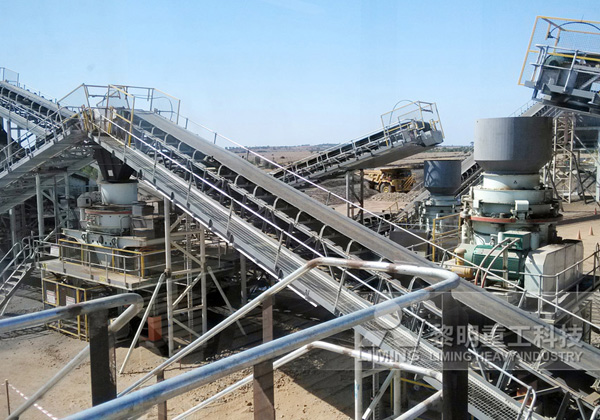A stone crushing plant is a crucial infrastructure used in mining, quarrying, and construction to process raw stone material into usable aggregates for building and other applications. The efficiency, productivity, and quality of the output largely depend on the configuration of the crushing plant. This article outlines the essential components and configuration required for a typical stone crushing plant.
Overview of Stone Crushing Plant
A stone crushing plant is designed to reduce large rocks into smaller aggregates or sand suitable for construction and industrial use. It involves several stages of crushing and screening, using various types of crushers and screens configured to match the feed material, desired output size, and capacity.

Key Components of a Stone Crushing Plant
The main components in a stone crushing plant configuration include:
1. Feed Hopper and Feeder
-
Function: Receives raw stone material and regulates the flow into the primary crusher.
-
Type: Vibrating feeders or grizzly feeders are common to ensure continuous and uniform feed.
2. Primary Crusher
-
Purpose: The first stage crusher that breaks down large rocks into smaller chunks.
-
Types: Jaw crusher or gyratory crusher is typically used.
-
Configuration: Capacity and feed size depend on the application and input material.
3. Secondary Crusher
-
Purpose: Further reduces the size of the crushed material from the primary crusher.
-
Types: Cone crusher, impact crusher, or roll crusher.
-
Configuration: Usually sized for the required output particle size.
4. Screening Unit
-
Purpose: Separates crushed stone by size to ensure uniform product output.
-
Type: Vibrating screens or rotary screens.
-
Configuration: Multiple decks to separate aggregates into various size fractions.
5. Conveyors
-
Function: Transport material between crushers, screens, and stockpiles.
-
Configuration: Belt conveyors sized to handle the expected capacity and length.
6. Washing Unit (Optional)
-
Purpose: Removes dust and impurities from crushed aggregates.
-
Type: Sand washer or log washer.
-
Used: Mainly in sand-making plants or when high-quality material is needed.
Typical Configuration of a Stone Crushing Plant
A standard stone crushing plant generally follows this flow:
-
Raw Material Loading: Large stones loaded into the hopper.
-
Primary Crushing: Large stones crushed by a jaw crusher to about 100-300 mm.
-
Conveying: Crushed material transferred to a vibrating screen via conveyors.
-
Screening: Stones are separated by size; undersized material goes for further crushing or stockpiling.
-
Secondary Crushing: Oversized stones fed to cone or impact crushers for further reduction.
-
Final Screening: Final products screened into various sizes (e.g., 0-10 mm, 10-20 mm, 20-40 mm).
-
Stockpiling: Separated products conveyed to stockpiles for dispatch.
Capacity Planning
The plant configuration must be designed according to the desired output capacity, typically expressed in tons per hour (TPH). For example, a 100 TPH plant would require crushers, feeders, screens, and conveyors sized accordingly to handle 100 tons of material per hour without bottlenecks.
Power and Control Systems
-
Power Supply: The plant may be powered by electricity or diesel generators, depending on location and availability.
-
Control Systems: Modern plants use centralized control panels with automation to monitor crusher speed, feed rate, and screening efficiency.
Additional Considerations
-
Mobility: Some plants are fixed, while others are mobile or semi-mobile to adapt to quarry conditions.
-
Dust Control: Dust suppression systems such as water sprays and dust collectors to minimize environmental impact.
-
Maintenance: Easy access to crushers and screens for routine maintenance increases plant uptime.
The configuration of a stone crushing plant is a key determinant of its operational efficiency and product quality. Proper selection and arrangement of feeders, crushers, screens, conveyors, and power/control systems according to the feed material and production targets ensure optimal performance. Careful planning on capacity, mobility, and environmental controls further enhances the viability and sustainability of the crushing operation.
If you are planning to set up a stone crushing plant, consulting with experienced equipment suppliers and engineers can help tailor the configuration to your specific project needs.
